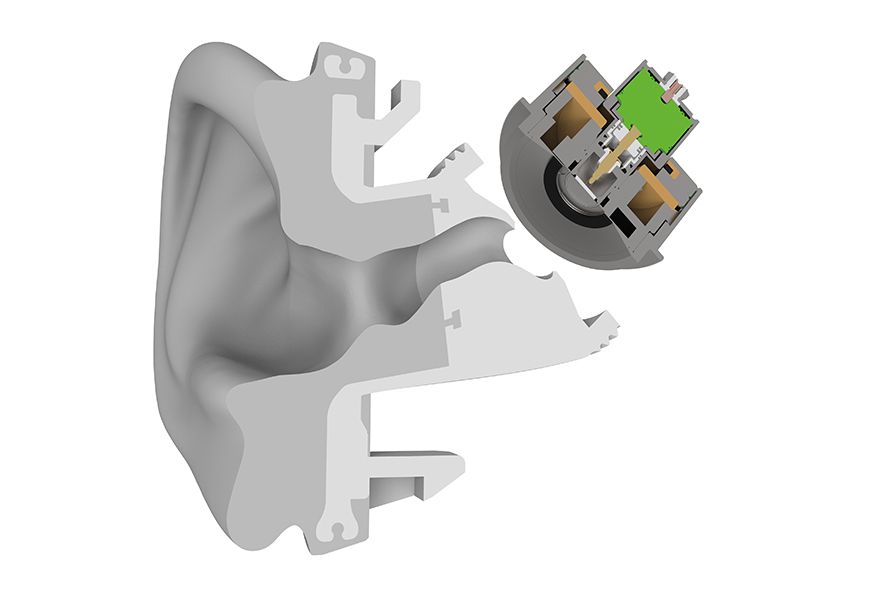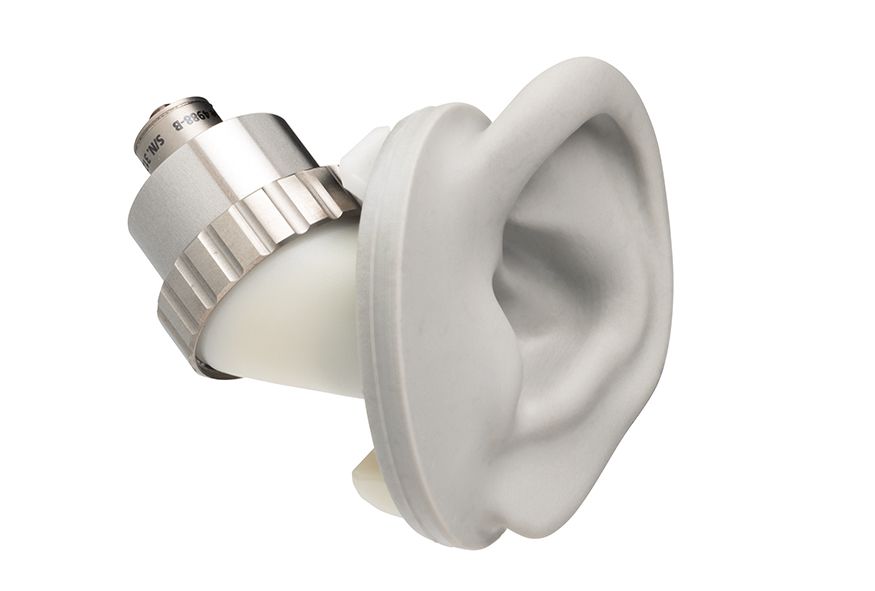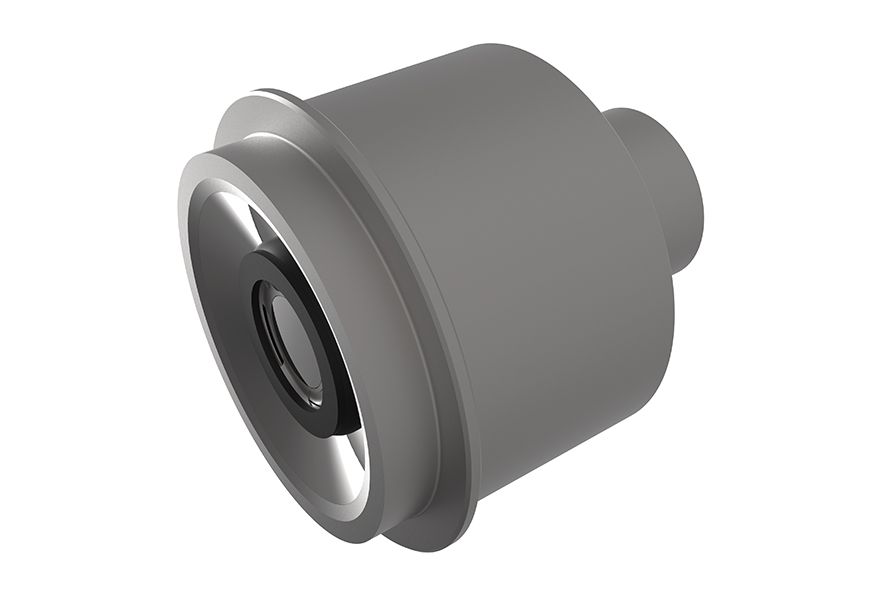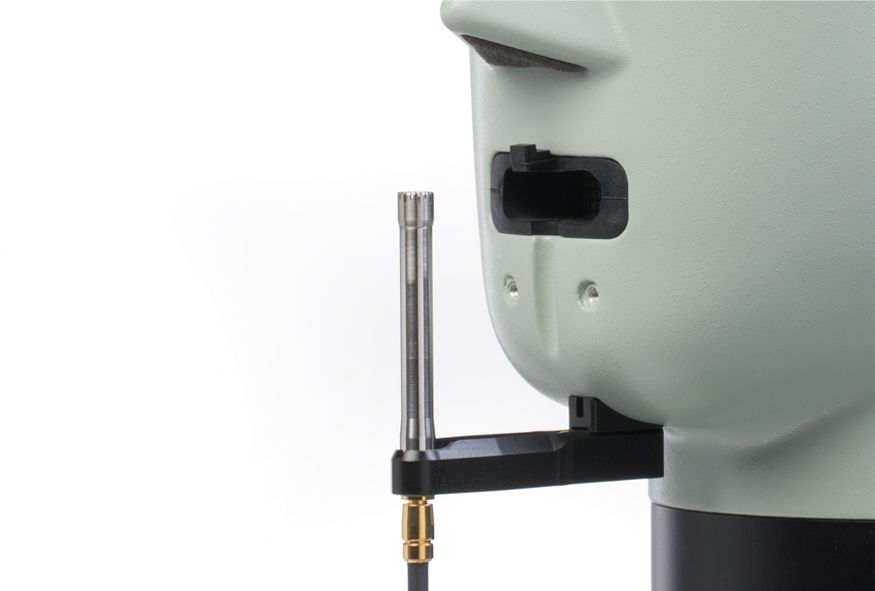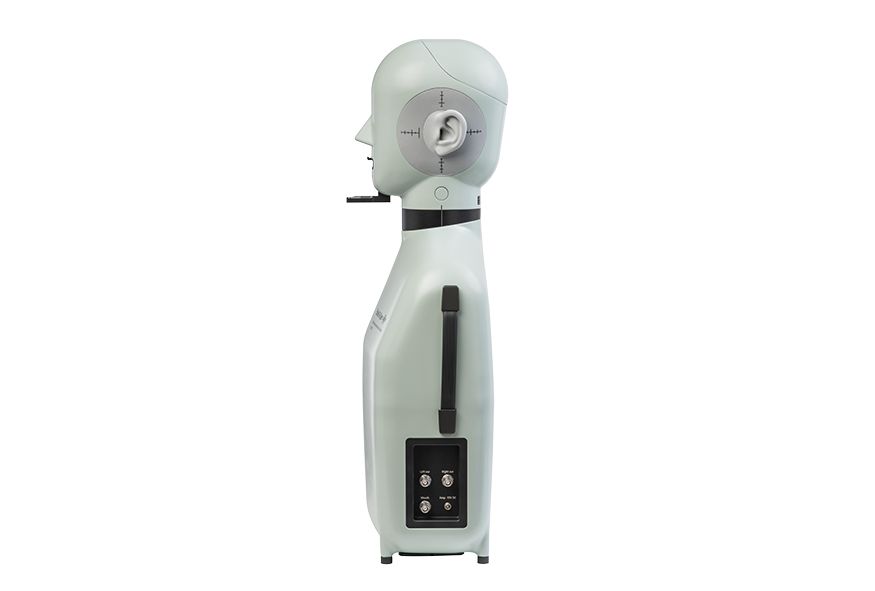EVOLUTION OF HEARING SIMULATION
PART 1:
PART 2:
Let’s Begin: The New Ear Simulator
The world of communication and entertainment is evolving and consumer expectations for audio quality continue to increase. We knew that the ear simulator of Type 4128 with its cylindrical ear canal did not allow realistic mounting of in-ear devices. Neither was the legendary IEC 711 coupler designed to perform acoustic measurement over the full audio range, 20 Hz to 20 kHz.
Therefore, we decided to build a new ear simulator – starting with a human-like pinna and ear canal as well as a unique eardrum simulator that matches the impedance of an average human ear over the full audio range.
Designing An Anatomically Correct Ear
We collected the geometries of a large population of human ears using MRI scanner technology. The full ear canal geometry including the bony part adjoining the eardrum was captured. By post-processing all the data, we were able to determine an average human ear canal geometry.
The new ear has an anatomically correct ear canal with an angled eardrum simulator positioned exactly at the location of the eardrum to closely match the human ear. A new design of the pinna interior structure was used to create a more robust ear capable of withstanding more wear and tear. The transition between the soft part (the silicone ear) and the hard material (the end of the ear canal where you attach the eardrum simulator) was designed to retain the transition from the soft to the bony part of the human ear canal.
We also added a soft silicone band all around the ear for better sealing of over-the-ear headphones. A new click-on system, with a quick release of the ear simulator, allows for easy ear switching if needed. Finally, we designed a new mechanism to quickly attach and detach the new eardrum simulator from the ear, enabling the use of custom outer ear and ear canal geometry.
RELATED PRODUCTS
Symmetrical Pinnae DZ-9769 and DZ-9770
New Eardrum Simulator
While measuring the human ear canal anatomy, we also measured the corresponding full-range acoustic impedance for every single ear and were able to determine an average human acoustic impedance.
To achieve optimal accuracy of the eardrum simulator response up to 20 kHz (remember that the wavelength of a 20 kHz sound wave is shorter than 2 cm) we had to use an unprecedented level of precision in the design and during the manufacturing processes.
Our aim was to have an artificial eardrum that is closer to the human eardrum in size. To accommodate this, we developed a new pre-polarized ¼-inch microphone with a unique, flat pressure response and a new low-noise preamplifier. The result? A new eardrum simulator has been born, matching the frequency response and acoustic impedance targets.
Redesigned Mouth Simulator
The mouth simulator has also been redesigned. Using a custom-designed loudspeaker element with optimized geometry and a stronger magnet system, we optimized the volume of the loudspeaker cabinet.
This resulted in a full-range mouth simulator (with an extended response in both the low- and high-frequency range). This not only allows the mouth to be louder it also improved high-frequency roll-off. The new mouth also has a built-in amplifier, simplifying measurement setups and lowering system cost.
RELATED PRODUCT
Mouth Simulator Type 4227 and 4227-A
High-frequency HATS Type 5128
HATS Type 5128 was designed with a connector side panel that includes power and signal input for the mouth, and two CCLD microphone connectors (CCLD microphones allow for inexpensive BNC cables, acquisition front end, and conditioning system). You do not have to go fishing for cables anymore, everything is clearly labelled and easy to reach.
RELATED PRODUCT
High-Frequency HATS Type 5128
So, do I really need Type 5128 HATS?
Type 5128 is designed to be used when high-frequency content is of importance.
This could be testing the audio performance of smart devices, hands-free, headphones, or hearing aids. Type 5128 loads the devices under test with the exact same impedance as an average human ear. This means that it measures the audio quality of a device in the same way as a human would perceive the quality.
The ability to measure in the full audio band (20 Hz to 20 kHz) is a huge step in audio performance evaluation, which potentially could facilitate the retirement of the venerable IEC 711 coupler.
RELATED ARTICLES:

뉴스레터를 구독하고 소리와 진동에 대한 최신 이야기를 만나보세요


